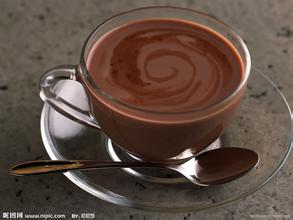The skill of making milk in the ratio of espresso to milk foam
The skill of making milk in the ratio of espresso to milk foam
Milk: the fat content of milk used in latte drinks is basically about 3%. The less fat, the harder the foam. What you want is smooth foam (so forget about fat-free cappuccinos).
About foam: the main thing to keep in mind when making foam is to stop when the temperature reaches the right point. The appropriate temperature refers to 55-65 °C, depending on your taste. Foaming for too long will condense the milk and change its taste (and cappuccino will be too hot). Overheated milk can also make the foam too hard. How different will the foam be? Here are some typical examples:
Blistering: if you are distracted or inattentive when you are milking, it is easy to cause the steam pipe to be above the surface of the milk rather than just below it. The result is milk spatter and larger milk bubbles. Of course you can still get a lot of foam in the flower cup, but it will taste bad.
Too hard: the hard foam looks stiff, and it doesn't mix with the coffee when you pour it into the coffee, but accumulates on top of your coffee like fluffy beaten cream. If you play a little longer, it will be layered, 90% of which is flowing milk, and a thick hard foam lid floating on it. When you pour it into the coffee, the milk will flow out of the flower cup first. You must scoop the foam into the coffee cup with a spoon.
Smooth: if you do everything right, when you pour out the foam, the milk looks smooth and creamy, a bit like pouring yogurt. The milk and your espresso will mix perfectly, and the crema will color the surface of the milk to form a typical brown edge of the cappuccino.
Milk that has been beaten again often makes hard foam. The trick is to make the right quantity and quality of milk foam in the flower cup at the right temperature. To foam well, you need to know how fast your machine heats up the amount of milk you want.
A good piece of advice is not to take less than two cups of cappuccino at a time when you start learning to make milk foam.
About the steam in the coffee machine:
1. After the machine reaches the correct temperature, turn on the steam switch, release the water that always exists in the steam pipe, and then turn off the steam switch.
two。 Put the nozzle below the surface of the milk and turn on the steam. If you turn on the steam when the nozzle is above the liquid level, you will get larger bubbles, and it will take a lot of effort to get rid of these bubbles.
3. Slowly take the nozzle to the surface of the milk. Stop (stop just as it breaks the surface) just as the nozzle is about to come off the surface. Now that the air is sucked into the milk, you will hear a typical hiss. If you accidentally take the nozzle out of the water, the pressurized air will blow on top of the milk instead of into the milk, resulting in large bubbles.

Important Notice :
前街咖啡 FrontStreet Coffee has moved to new addredd:
FrontStreet Coffee Address: 315,Donghua East Road,GuangZhou
Tel:020 38364473
- Prev

Italian coffee machine recommended grinding scale how many brands recommended to use method
Italian coffee machine recommended grinding scale how many brands recommended solution 1: Italian semi-automatic coffee machine grinding how much scale and powder, how much siphon pot, how much coffee, mocha pot how many solutions 2: grinding thickness, electric to the commonly used baby eagle and Pegasus is more common, it is a relative standard, each is not every, each grinding bean
- Next

Introduction to the correct method of filling and pressing Italian Coffee and Powder pressing skills
Introduction to the correct filling methods and powder pressing techniques of espresso now let's talk about the effect of pressing too tight on Espresso extraction. If the coffee powder is pressed very tightly, it will be pressed to death, and the water will not penetrate the coffee pressed powder at 9 pressures. I dare not imagine the taste of this concentrated cup after dripping 30 milliliters and the time it will take.
Related
- Beginners will see the "Coffee pull flower" guide!
- What is the difference between ice blog purified milk and ordinary milk coffee?
- Why is the Philippines the largest producer of crops in Liberia?
- For coffee extraction, should the fine powder be retained?
- How does extracted espresso fill pressed powder? How much strength does it take to press the powder?
- How to make jasmine cold extract coffee? Is the jasmine + latte good?
- Will this little toy really make the coffee taste better? How does Lily Drip affect coffee extraction?
- Will the action of slapping the filter cup also affect coffee extraction?
- What's the difference between powder-to-water ratio and powder-to-liquid ratio?
- What is the Ethiopian local species? What does it have to do with Heirloom native species?

